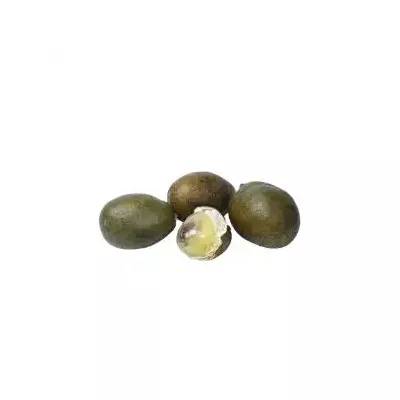



Matoa is a high-yielding tropical fruit tree that has a taste similar to that of rambutan. Matoa has a good, thick skin and a nice, fleshy inner core. The fleshy part is easily separated from the small pulp and is very tasty.
The Matova tree flowers in the month of October and starts giving good, ripe fruits in 45 days. Unripe Matoa is green in colour, which turns purple upon ripening.
Matoa fruit is not usually affected by pests. The male and female flowers bloom together on the Matoa tree, which grows 20 metres or more in height.

Pay using UPI, Card or Netbanking

Shipping within 3 working days
Matoa, or Fijian longan, is known for its sweet and juicy fruit, which is similar to rambutan in taste. Matoa is less fleshy than rambutan but produces fruit in large bunches.
It is native to Fiji, the Pacific Islands, Malaysia, and Indonesia. Due to this, it is also called Fijian longan.
Matoa can reach a height of 20 metres and its canopy can spread out to a width of 30 feet or even more.
Seedlings are usually the planting material. It is a fast-growing tree that starts producing fruit within 3–4 years of planting.
Matoa grow well in tropical and subtropical climates and hence it can grow in most places in India. Full sun exposure is needed to produce fruit.
Prune the tree to a manageable size; else, it will grow into a very large tree. However, if the tree is also grown for its lumber, then it may be allowed to grow big. Leave a spacing of about 30 feet while planting matoa.
The matoa fruit is a small, round, fleshy fruit with a single seed inside. The matoa fruit has a hard shell. The skin of the fruit is thin and leathery, turning red or yellow when ripe. It is similar in appearance to the lychee.
The flesh is sweet and juicy, and it does not stick to the seed. Its flavour is often compared to that of rambutan.
The fruit is commonly eaten fresh. There are various health benefits, including improving digestion and treating skin conditions.
Matoa is a good source of vitamin C, dietary fibre, and antioxidants.
The seeds are edible either cooked or roasted, but not raw.
Matoa is an important timber tree for the lumber industry in countries where it is natively found. Its wood is used for construction, furniture, and boat-building. It is also used for making veneers.
Data sheet